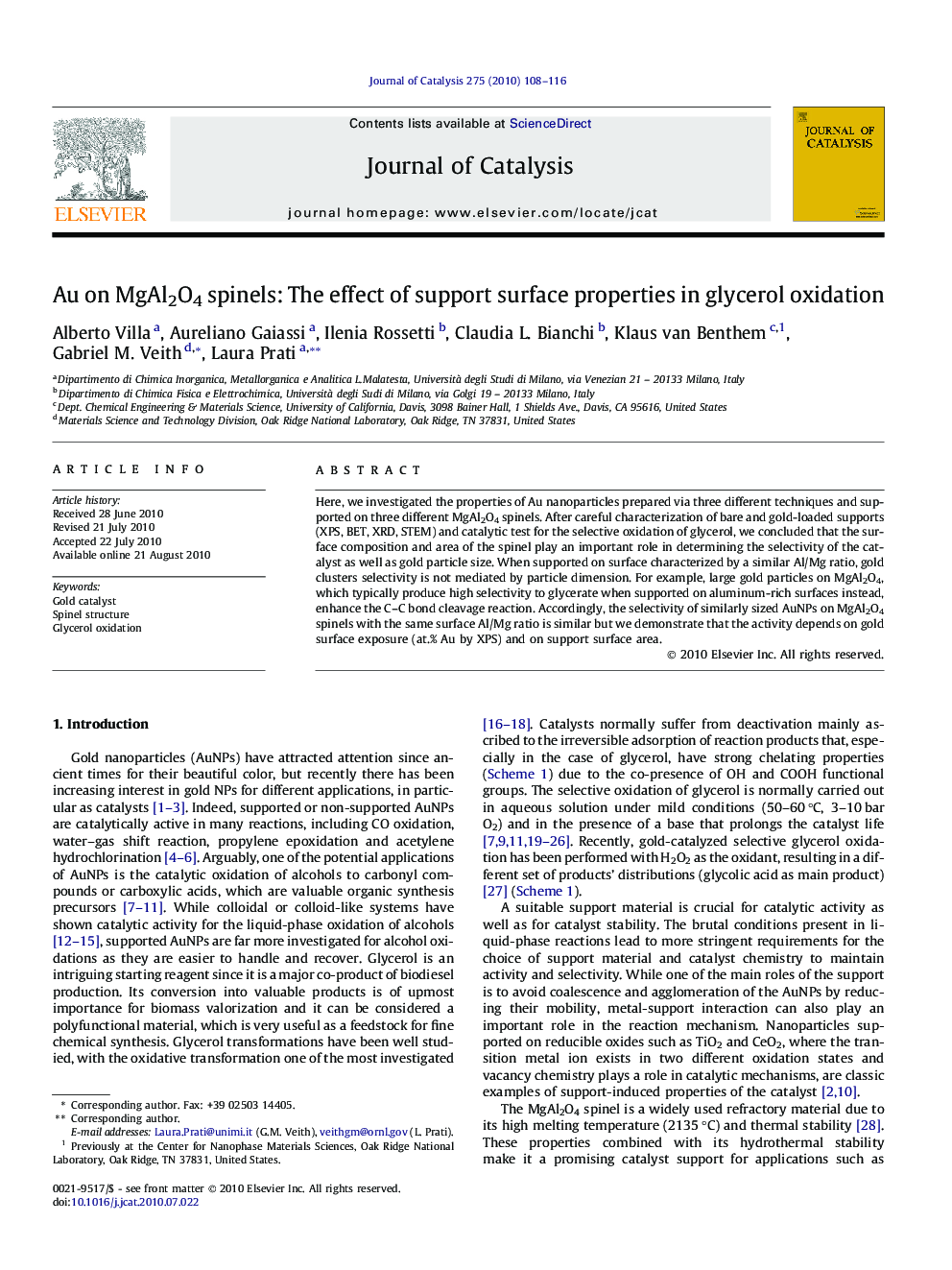| Article ID | Journal | Published Year | Pages | File Type |
|---|---|---|---|---|
| 62162 | Journal of Catalysis | 2010 | 9 Pages |
Here, we investigated the properties of Au nanoparticles prepared via three different techniques and supported on three different MgAl2O4 spinels. After careful characterization of bare and gold-loaded supports (XPS, BET, XRD, STEM) and catalytic test for the selective oxidation of glycerol, we concluded that the surface composition and area of the spinel play an important role in determining the selectivity of the catalyst as well as gold particle size. When supported on surface characterized by a similar Al/Mg ratio, gold clusters selectivity is not mediated by particle dimension. For example, large gold particles on MgAl2O4, which typically produce high selectivity to glycerate when supported on aluminum-rich surfaces instead, enhance the C–C bond cleavage reaction. Accordingly, the selectivity of similarly sized AuNPs on MgAl2O4 spinels with the same surface Al/Mg ratio is similar but we demonstrate that the activity depends on gold surface exposure (at.% Au by XPS) and on support surface area.
Graphical abstractThe catalytic activity of AuNPs on spinels is dependent on Au size and accessibility by the reactant, whereas selectivity is ruled out by the Mg/Al ratio at the surface.Figure optionsDownload full-size imageDownload high-quality image (41 K)Download as PowerPoint slide
